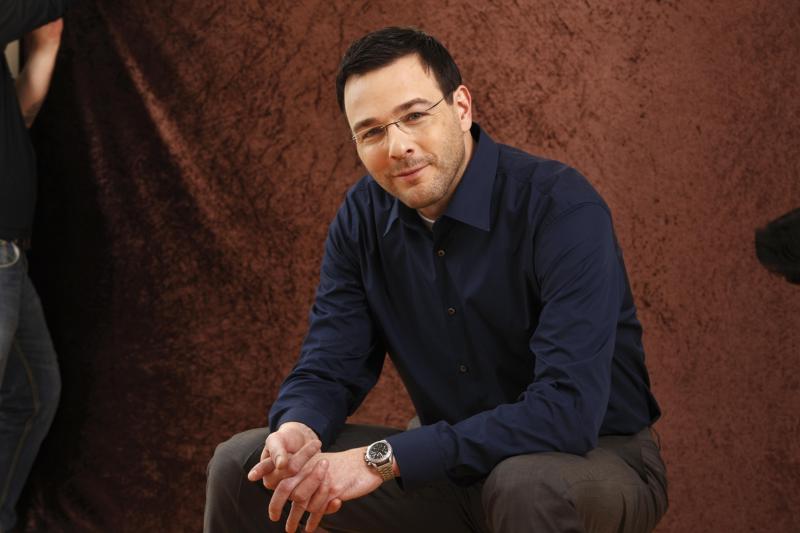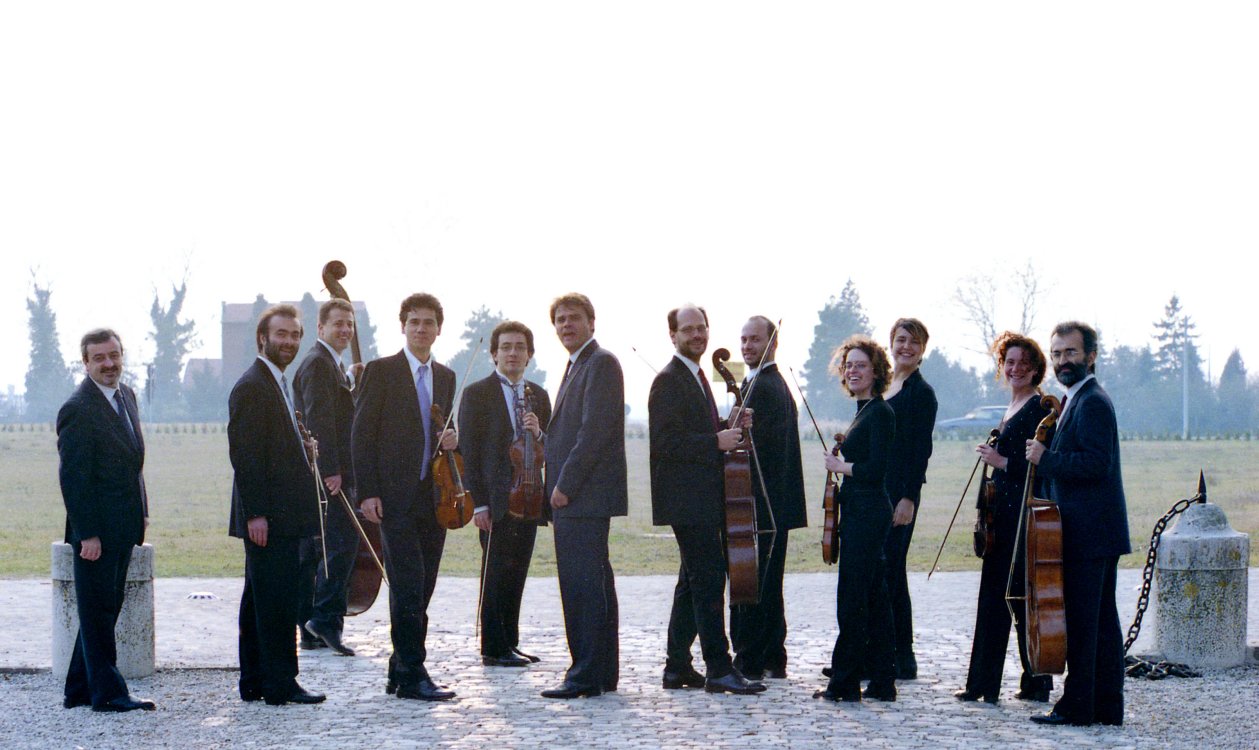Andreas Scholl, Accademia Bizantina, Barbican | reviews, news & interviews
Andreas Scholl, Accademia Bizantina, Barbican
Andreas Scholl, Accademia Bizantina, Barbican
Newly discovered works got a bit lost in the fuss and fog of this performance

Marian devotions have given us some of sacred music’s most striking works, from graceful Ave Marias to anguished settings of the Stabat Mater. Andreas Scholl and musicologist Bernardo Ticci have recently gone in search of some less familiar ones – companion pieces for Vivaldi’s theatrical Stabat Mater, which has long been part of Scholl’s concert repertoire.
While the speaker of the Stabat Mater (set here both by Vivaldi) watches the grieving Virgin from a distance, the Marian texts of Porpora’s Il trionfo della Divina Giustizia nei tormenti e morte di Gesu Cristo and Vinci’s Oratorio a 4 Voci e Stromenti are both first-person narratives, creating a wonderfully androgynous friction with a countertenor soloist. It’s a dramatic tension Scholl’s distinctive voice plays into, its glassy purity – frosted slightly now compared to its early clarity – chafing against the low-lying register of much of this repertoire.
Scholl delivered a disquietingly beautiful performance of Vivaldi's 'Stabat Mater'There’s an aural discomfort that works nicely for the Porpora, with its knottier emotions and aching lament “Occhi mesti”, but less so for the galant ease and trickling lyricism of the Anfossi or the showy coloratura of Porpora’s “Per pieta”, which would both benefit from a power and gloss Scholl simply doesn’t have towards the lower end of his voice. Had the concert been programmed in the Wigmore Hall it wouldn’t have mattered so much, but in the unsympathetic cavern of the Barbican it was unignorable, and I wonder how much those at the back were really able to hear.
But with the Vivaldi the mist lifted. Released into a more comfortable register Scholl delivered a disquietingly beautiful performance, taking us from the dark drama of his “Quis est homo”, its string parts hammering the nails of the Cross so clearly, to the rhetorical fluidity of the “Quis non posset” and the fragility of the “Vidit suum” passage. How good to hear the work among its peers, to set it against the passionate, quasi-operatic spirituality of the Porpora and Vinci and the superficial, salon charm of the Anfossi, and understand the power of its restraint.
 Under music director Ottavio Dantone Accademia Bizantina (pictured above) are a dynamic force. Without him, directed from the violin by Alessandro Tampieri, the Ravenna-based group were noticeably more muted, less expansive in their gestures. Ragazzi’s Sonata a 4 in C minor was engaging enough, if unremarkable, but Vivaldi’s Violin Concerto in G minor RV332 felt decidedly unsteady, pinched and anxious from Tampieri as soloist – a feeling transmitted to the band whose tempi rocked unsettlingly throughout.
Under music director Ottavio Dantone Accademia Bizantina (pictured above) are a dynamic force. Without him, directed from the violin by Alessandro Tampieri, the Ravenna-based group were noticeably more muted, less expansive in their gestures. Ragazzi’s Sonata a 4 in C minor was engaging enough, if unremarkable, but Vivaldi’s Violin Concerto in G minor RV332 felt decidedly unsteady, pinched and anxious from Tampieri as soloist – a feeling transmitted to the band whose tempi rocked unsettlingly throughout.
Too many tuning breaks and too much stage business cluttered a programme with much to offer, blunting the dramatic blade of works that deserved greater clarity for what was, in many cases, their first concert outing in the UK.
Add comment
The future of Arts Journalism
You can stop theartsdesk.com closing!
We urgently need financing to survive. Our fundraising drive has thus far raised £49,000 but we need to reach £100,000 or we will be forced to close. Please contribute here: https://gofund.me/c3f6033d
And if you can forward this information to anyone who might assist, we’d be grateful.

Subscribe to theartsdesk.com
Thank you for continuing to read our work on theartsdesk.com. For unlimited access to every article in its entirety, including our archive of more than 15,000 pieces, we're asking for £5 per month or £40 per year. We feel it's a very good deal, and hope you do too.
To take a subscription now simply click here.
And if you're looking for that extra gift for a friend or family member, why not treat them to a theartsdesk.com gift subscription?
more Classical music
 Goldscheider, Brother Tree Sound, Kings Place review - music of hope from a young composer
Unusual combination of horn, strings and electronics makes for some intriguing listening
Goldscheider, Brother Tree Sound, Kings Place review - music of hope from a young composer
Unusual combination of horn, strings and electronics makes for some intriguing listening
 theartsdesk Q&A: composer Donghoon Shin on his new concerto for pianist Seong-Jin Cho
Classical music makes its debut at London's K-Music Festival
theartsdesk Q&A: composer Donghoon Shin on his new concerto for pianist Seong-Jin Cho
Classical music makes its debut at London's K-Music Festival
 Helleur-Simcock, Hallé, Wong, Bridgewater Hall, Manchester review - moving lyricism in Elgar’s concerto
Season opener brings lyrical beauty, crisp confidence and a proper Romantic wallow
Helleur-Simcock, Hallé, Wong, Bridgewater Hall, Manchester review - moving lyricism in Elgar’s concerto
Season opener brings lyrical beauty, crisp confidence and a proper Romantic wallow
 Kohout, Spence, Braun, Manchester Camerata, Huth, RNCM, Manchester review - joy, insight, imagination and unanimity
Celebration of the past with stars of the future at the Royal Northern College
Kohout, Spence, Braun, Manchester Camerata, Huth, RNCM, Manchester review - joy, insight, imagination and unanimity
Celebration of the past with stars of the future at the Royal Northern College
 Jansen, LSO, Pappano, Barbican review - profound and bracing emotional workouts
Great soloist, conductor and orchestra take Britten and Shostakovich to the edge
Jansen, LSO, Pappano, Barbican review - profound and bracing emotional workouts
Great soloist, conductor and orchestra take Britten and Shostakovich to the edge
 Jakub Hrůša and Friends in Concert, Royal Opera review - fleshcreep in two uneven halves
Bartók kept short, and a sprawling Dvořák choral ballad done as well as it could be
Jakub Hrůša and Friends in Concert, Royal Opera review - fleshcreep in two uneven halves
Bartók kept short, and a sprawling Dvořák choral ballad done as well as it could be
 Hadelich, BBC Philharmonic, Storgårds, Bridgewater Hall, Manchester review - youth, fate and pain
Prokofiev in the hands of a fine violinist has surely never sounded better
Hadelich, BBC Philharmonic, Storgårds, Bridgewater Hall, Manchester review - youth, fate and pain
Prokofiev in the hands of a fine violinist has surely never sounded better
 Monteverdi Choir, ORR, Heras-Casado, St Martin-in-the-Fields review - flames of joy and sorrow
First-rate soloists, choir and orchestra unite in a blazing Mozart Requiem
Monteverdi Choir, ORR, Heras-Casado, St Martin-in-the-Fields review - flames of joy and sorrow
First-rate soloists, choir and orchestra unite in a blazing Mozart Requiem
 Cho, LSO, Pappano, Barbican review - finely-focused stormy weather
Chameleonic Seong-Jin Cho is a match for the fine-tuning of the LSO’s Chief Conductor
Cho, LSO, Pappano, Barbican review - finely-focused stormy weather
Chameleonic Seong-Jin Cho is a match for the fine-tuning of the LSO’s Chief Conductor
 Classical CDs: Shrouds, silhouettes and superstition
Cello concertos, choral collections and a stunning tribute to a contemporary giant
Classical CDs: Shrouds, silhouettes and superstition
Cello concertos, choral collections and a stunning tribute to a contemporary giant
 Appl, Levickis, Wigmore Hall review - fun to the fore in cabaret and show songs
A relaxed evening of light-hearted fare, with the accordion offering unusual colours
Appl, Levickis, Wigmore Hall review - fun to the fore in cabaret and show songs
A relaxed evening of light-hearted fare, with the accordion offering unusual colours
 Lammermuir Festival 2025, Part 2 review - from the soaringly sublime to the zoologically ridiculous
Bigger than ever, and the quality remains astonishingly high
Lammermuir Festival 2025, Part 2 review - from the soaringly sublime to the zoologically ridiculous
Bigger than ever, and the quality remains astonishingly high

Comments
Many thanks for this review.
Many thanks for this review. Just a few corrections. Mrs Coughlan writes, "While the speaker of the Stabat Mater (set here both by Vivaldi and Anfossi)". There was no "Stabat Mater" by Anfossi performed in the program. The Anfossi piece we performed was a "Salve Regina", which is from it´s content something altogether different. There is no "Vidit suum" movement in Vivaldi´s "Stabat Mater" as Mrs. Coughlan suggests. This stanza is included as a soprano aria in Pergolesis "Stabat Mater", but isn´t featured as a separate movement in Vivaldis "Stabat Mater". Leonardo Vincis two arias were also performed during the concert as advertised in the program brochure. I agree on Mrs. Coughlan´s important observation about the "stage business" breaking up the arch of musical tension. As she would agree: There is always space for improvement.
Thank you for your correction
Thank you for your correction, Andreas. The reference to the Anfossi has been changed, and I have made it clear that the reference to the "Vidit suum" is the passage of music rather than a discrete movement.
That´s the beauty of being a
If all facts are to be
You're comparing apples with
Dear "Andrew" (if that really
Your analogy is also rather
If music critics can't get
For me, the stand-out pieces